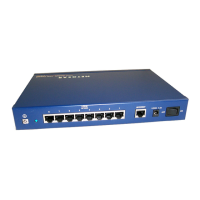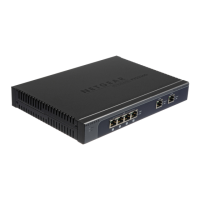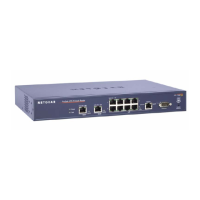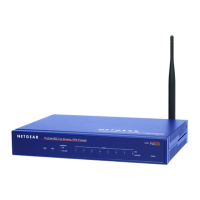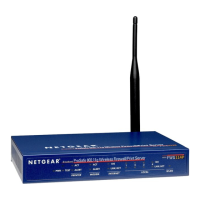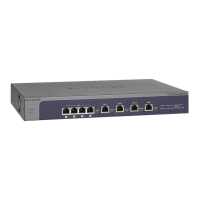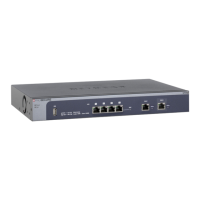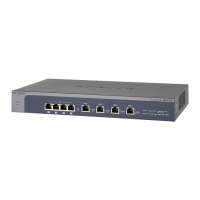Virtual Private Networking Using IPv4 SSL Connections
232
ProSafe Wireless-N 8-Port Gigabit VPN Firewall FVS318N
3. Click Apply to save your settings. VPN tunnel clients are now able to connect to the wireless
VPN firewall and receive a virtual IP address in the client address range.
Add Routes for VPN Tunnel Clients
The VPN tunnel clients assume that the following networks are located across the
VPN-over-SSL tunnel:
• The subnet that cont
ains the client IP address (that is, PPP interface), as determined by
the class of the address (Class A, B, or C).
• Subn
ets that are specified in the Configured Client Routes table on the SSL VPN Client
screen.
If the assigned client IP address range is in a dif
ferent subnet from the local network, or if the
local network has multiple subnets, or if you select split-tunnel operation, you need to define
client routes.
To add an SSL VPN tunnel client route:
1. Select VPN > SSL VPN
> SSL VPN Client. The SSL VPN Client screen displays (see
Figure 135 o
n page 231).
2. In
the Add Routes for VPN Tunnel Clients section of the screen, specify information in the
following fields:
• Destin
ation Network. The destination network IP address of a local network or
subnet. For example, enter 192.168.1.60.
• Subne
t Mask. The address of the appropriate subnet mask.
3. Click the Add t
able button. The new client route is added to the Configured Client Routes
table.
If VPN tunnel clients are already connected, disconne
ct and then reconnect the clients on the
SSL VPN Connection Status screen (see View the SSL VPN Connection Status on
page 243). Doing so allows the clients to receive new addresses and routes.
To change the specifications of an existing route and to delete an old route:
1. Add a new rou
te to the Configured Client Routes table.
2. In
the Configured Client Routes table, to the right of the route that is out-of-date, click the
Delete table button.
If an existing route is no longer needed, you can delete it.
Client Address Range Begin The first IP address of the IP address range that you want to assign to the
VPN tunnel clients. By default, the first IP address is 192.168.251.1.
Client Address Range End The last IP address of the IP address ran
ge that you want to assign to the
VPN tunnel clients. By default, the last IP address is 192.168.251.254.
Table 59. SSL VPN Client screen settings (continued)
Setting Description
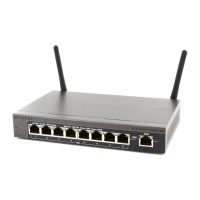
